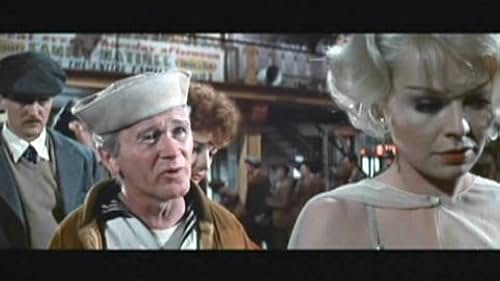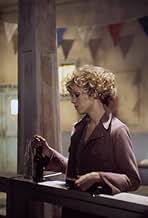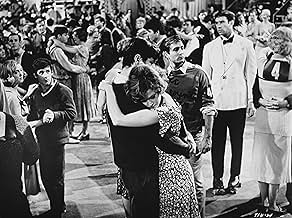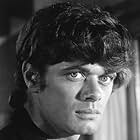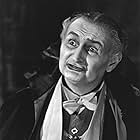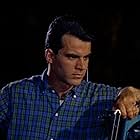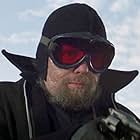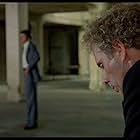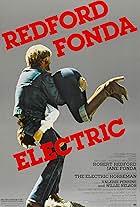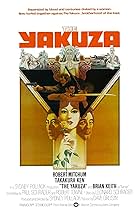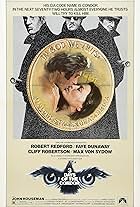VALUTAZIONE IMDb
7,8/10
21.315
LA TUA VALUTAZIONE
Le vite di un gruppo eterogeneo di concorrenti si intrecciano in una maratona di danza disumanamente estenuante.Le vite di un gruppo eterogeneo di concorrenti si intrecciano in una maratona di danza disumanamente estenuante.Le vite di un gruppo eterogeneo di concorrenti si intrecciano in una maratona di danza disumanamente estenuante.
- Vincitore di 1 Oscar
- 11 vittorie e 25 candidature totali
Art Metrano
- Max
- (as Arthur Metrano)
Trama
Lo sapevi?
- QuizHolds the record for the movie with the most Academy Award nominations without a nomination for Best Picture: 9.
- BlooperWhen Sailor (Red Buttons) is passed out, two referees take his pants off him to dunk him into a tub of ice water; Buttons lifts up his hips so they can easily remove his pants.
- ConnessioniFeatured in The Moviemakers (1969)
- Colonne sonoreEasy Come, Easy Go
(1934)
Lyrics by Edward Heyman
Music by Johnny Green (as John Green)
Music played often during the film
Played on piano and Sung by Lynn Willis (uncredited)
Recensione in evidenza
THEY SHOOT HORSES DON'T THEY? This movie stays in the memory, partly because it stands out from other mainstream Hollywood products of its time in subject matter (the dance marathons of the 20s and 30s) and tone (pitilessly and harshly negative; even the humor is bleak). The message: life (the marathon) is a desperate rat race with a rigged outcome.
How certain actors end up with certain roles depends on the crazy complicated game known as Hollywood casting, but sometimes even a miscast performer will bring an unexpected something to the table and triumph. Such was the case with Bette Davis in ALL ABOUT EVE (written with Claudette Colbert or Gertrude Lawrence in mind) and such is the case with Jane Fonda in a role that would have been better suited to someone like Stella Stevens. Fonda overcomes the odds as Gloria, the morbidly cynical and impoverished young woman whose brief life has been a series of abuses, disappointments and defeats. Even though the actress looks and speaks like a patrician, her defiant, angry, controlled desperation burns through the superficialities. Her performance culminates in an emotional meltdown which she handles with skill. It was her great breakthrough as a screen actress.
Another career peak is reached by Gig Young who, as the master of ceremonies, personifies all the dishonesty, cruelty and pathos of the marathon itself. Bonnie Bedelia and Susannah York also score as different kinds of vulnerable innocents. Michael Sarrazin as Fonda's dance partner serves as the passive instrument that allows Fonda to play out her tortured personal drama. His unchanging wounded puppy dog expression speaks for itself.
Ironically, the musical arrangements by John Green, a brilliant and very active composer of early 30's popular songs (including "Body and Soul"), sound more like Lawrence Welk than a real third-rate dance band of the early Depression era. As musical supervisor of this film I wonder if it was Green who anachronistically included songs that hadn't even been written when the story takes place, including "I Cover the Waterfront" (1933) and "Easy Come, Easy Go" (1934), both of which Green composed himself.
For some reason the scriptwriter chose to move the story to 1932 from its original placement in 1934 by author Horace McCoy in the novel on which this film is based. At one point an old lady tells Fonda and Sarrazin that they are her favorite dance couple because they're wearing the number "67" which is the year she was born (1867). Later Fonda calculates her age: "Sixty-five." Which enables us to figure out that the action is taking place in 1932. In another scene Fonda, referring to Bonnie Bedelia, quips, "If she's not pregnant, then I'm Nelson Eddy." Eddy didn't become a nationally known name until 1935 when he teamed with Jeanette MacDonald. He didn't even appear in a major motion picture until 1933 (DANCING LADY, MGM). A woman of 1932 would have been more likely to say "Bing Crosby" or "Rudy Vallee" or even "Russ Columbo." So one can't help wondering why the screenwriter bothered to move the action backwards by two years.
Exhausted couples staggering around a dance floor under a shining, spinning ball composed of mirror fragments that reflect off the ceiling, walls and floor - a symbol of Earth and the cosmos around it and oppressed humanity on the bottom grimly pressing on. That's the film in a nutshell.
How certain actors end up with certain roles depends on the crazy complicated game known as Hollywood casting, but sometimes even a miscast performer will bring an unexpected something to the table and triumph. Such was the case with Bette Davis in ALL ABOUT EVE (written with Claudette Colbert or Gertrude Lawrence in mind) and such is the case with Jane Fonda in a role that would have been better suited to someone like Stella Stevens. Fonda overcomes the odds as Gloria, the morbidly cynical and impoverished young woman whose brief life has been a series of abuses, disappointments and defeats. Even though the actress looks and speaks like a patrician, her defiant, angry, controlled desperation burns through the superficialities. Her performance culminates in an emotional meltdown which she handles with skill. It was her great breakthrough as a screen actress.
Another career peak is reached by Gig Young who, as the master of ceremonies, personifies all the dishonesty, cruelty and pathos of the marathon itself. Bonnie Bedelia and Susannah York also score as different kinds of vulnerable innocents. Michael Sarrazin as Fonda's dance partner serves as the passive instrument that allows Fonda to play out her tortured personal drama. His unchanging wounded puppy dog expression speaks for itself.
Ironically, the musical arrangements by John Green, a brilliant and very active composer of early 30's popular songs (including "Body and Soul"), sound more like Lawrence Welk than a real third-rate dance band of the early Depression era. As musical supervisor of this film I wonder if it was Green who anachronistically included songs that hadn't even been written when the story takes place, including "I Cover the Waterfront" (1933) and "Easy Come, Easy Go" (1934), both of which Green composed himself.
For some reason the scriptwriter chose to move the story to 1932 from its original placement in 1934 by author Horace McCoy in the novel on which this film is based. At one point an old lady tells Fonda and Sarrazin that they are her favorite dance couple because they're wearing the number "67" which is the year she was born (1867). Later Fonda calculates her age: "Sixty-five." Which enables us to figure out that the action is taking place in 1932. In another scene Fonda, referring to Bonnie Bedelia, quips, "If she's not pregnant, then I'm Nelson Eddy." Eddy didn't become a nationally known name until 1935 when he teamed with Jeanette MacDonald. He didn't even appear in a major motion picture until 1933 (DANCING LADY, MGM). A woman of 1932 would have been more likely to say "Bing Crosby" or "Rudy Vallee" or even "Russ Columbo." So one can't help wondering why the screenwriter bothered to move the action backwards by two years.
Exhausted couples staggering around a dance floor under a shining, spinning ball composed of mirror fragments that reflect off the ceiling, walls and floor - a symbol of Earth and the cosmos around it and oppressed humanity on the bottom grimly pressing on. That's the film in a nutshell.
I più visti
Accedi per valutare e creare un elenco di titoli salvati per ottenere consigli personalizzati
- How long is They Shoot Horses, Don't They??Powered by Alexa
Dettagli
- Data di uscita
- Paese di origine
- Lingua
- Celebre anche come
- They Shoot Horses, Don't They?
- Luoghi delle riprese
- Santa Monica Pier, Santa Monica, California, Stati Uniti(exterior scenes)
- Aziende produttrici
- Vedi altri crediti dell’azienda su IMDbPro
Botteghino
- Lordo Stati Uniti e Canada
- 12.600.000 USD
- Tempo di esecuzione2 ore 9 minuti
- Colore
- Mix di suoni
- Proporzioni
- 2.35 : 1
Contribuisci a questa pagina
Suggerisci una modifica o aggiungi i contenuti mancanti

Divario superiore
By what name was Non si uccidono così anche i cavalli? (1969) officially released in India in English?
Rispondi
